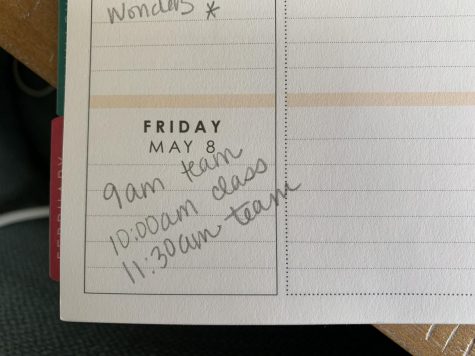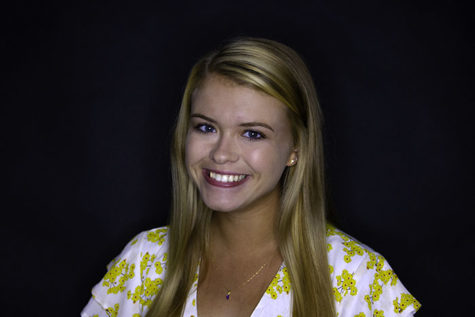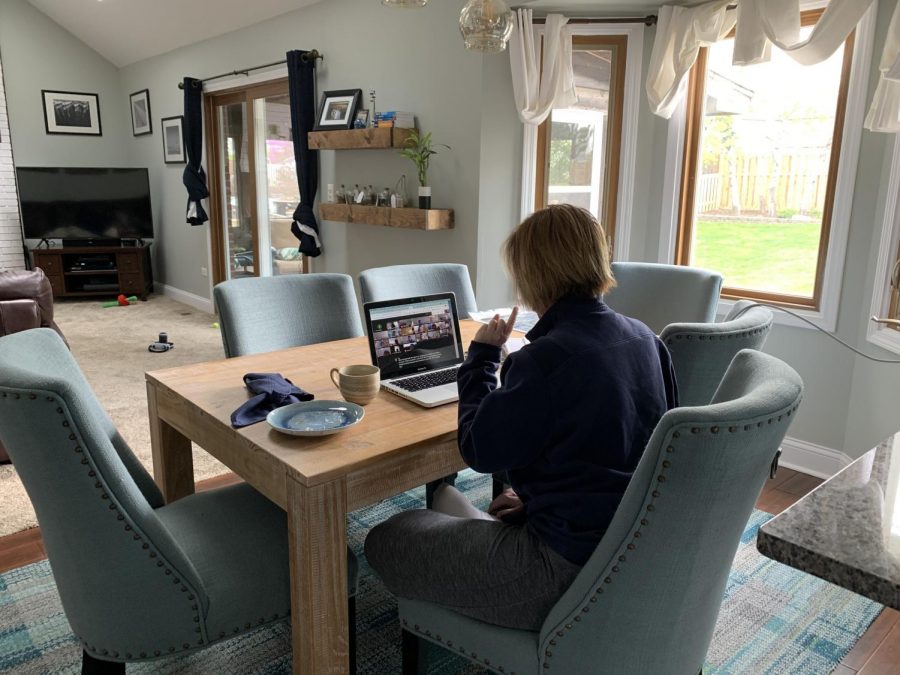Behind the Zoom screen: How teachers are coping with remote learning
With COVID-19 causing face-to-face learning to be cancelled for the rest of the year, many teachers now communicate with their students via video chats.
There’s no denying how much COVID-19 has altered the world we live in– from working and learning online to being unable to see loved ones, this is an unprecedented time. In District 99, the majority of the focus has been on how well the students are coping; however, it’s important to recognize the sacrifices and efforts being made by the staff.
Principal Ed Schwartz spoke on what remote learning and social distancing have caused him to reflect on.
“Like everyone, I don’t have the choice to do the things that I love, with the people I want to, when I want to do them. We have been forced to give up our pleasures, but we are doing so for the betterment of the greater society. I recognize how blessed I am – I am healthy, I have resources, I have a loving family and I have a job that provides meaning. I have been able to keep perspective, and the limited personal freedoms have allowed me to spend even more time creating the structures for school in our new environment,” Schwartz said.
In this unprecedented time, Schwartz and the other administrators of District 99 have had to adapt daily to announcements regarding COVID-19. It has forced them to be flexible, and modify e-Learning, which was originally a model for one day of learning, into remote learning, to sustain students through the end of the school year.
“There are so many things involved in schools, whether it is basic needs like food, or equipment needed like Chromebooks, Hotspots, musical instruments and other supplies. We’re trying to recreate a school experience for a whole community, but each family had their own unique situation that they were experiencing at the same time. Trying to find a system of balance while considering individual and collective situations was challenging…and we were building that with nearly everyone working from home.”
While the challenges being faced by the administration are vast, many teachers at DGS are also facing stressors when differentiating for remote learning.
“Without an enclosed office and with seven kids at home, finding a quiet space to engage in meetings with classes/colleagues can be a bit challenging,” social studies teacher Bryan Szweda said.
Szweda teaches the integrated studies course at DGS, which combines freshman English and global connections. He co-teaches this course, and spoke on the differences in planning when compared to other DGS classes.
“We have students periods 3 and 4, students only work on [global connections] during Mondays/Wednesdays and on their English work Tuesdays/Thursdays. We have a joint Google Classroom page, so everything that they need for both classes can be found in one location,” Szweda said.

In addition to communicating with his co-teacher, Szweda also noted that the social studies department has been a strong community during this time, a sentiment which has been echoed by many other departments at DGS.
“We have been in constant contact with each other. The global connections teachers have been meeting weekly to help plan and troubleshoot, we have also had multiple whole department meetings to address the process. There have been many times where teachers are communicating with each other via text messages, emails and phone calls to figure things out,” Szweda said.
Dual classes such as integrated studies provide a challenge to teachers in organizing their materials; however, an entire other struggle can be seen with the teachers who instruct AP courses. Jennifer Wolf works in the science department, teaching both AP Biology and Biology 300.
“I feel like a first year teacher all over again. While some of the content lends itself nicely to a remote environment, much of it does not. I’ve struggled with how many activities to assign to students, how I can teach asynchronously when I know that having everyone participate in a discussion at the same time would be more effective and how to ensure that I’ve pared down all of my assignments so that they teach the essentials but don’t cut out the application,” Wolf said.
Wolf has many students who are either essential workers themselves or have parents who are essential workers.
“The level of commitment they have to their job and their level of exhaustion is apparent through their emails and my interaction with them– some of my students will email and apologize for not having work turned in on time. In a normal time, this would be an opportunity to have a conversation about responsibility; however, now my response is always about doing what you can, biology should not be what causes [them] to lose sleep. We can always make alternative arrangements. You have to know your kids, you have to have established trust and a relationship with your students,” Wolf said.
This is an inexplicably difficult time for everyone involved, but despite the cancellation of face-to-face school for the remainder of the 2020 term, Schwartz remains optimistic.
“I don’t believe that school is over. I hope that people don’t view school as being over. If that is the case, the huge amount of work and personal learning that the adults are doing will be a waste. I am inspired by how hard the staff and students have worked to adapt in an attempt to make meaningful experiences. School is not over, it’s just not in this place,” Schwartz said.



